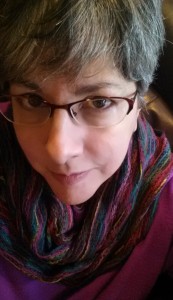Written by Connie Nice, Special Contributing Author
From My Desk: Part 1, The Phone Call
I vividly remember the day the office phone rang. When I answered it, my understanding of what it meant to be a Japanese American was changed forever.
The person on the other end of the line wanted to know what materials and information we had on the internment of the Japanese American families after Pearl Harbor, specifically as it related to Hood River County. I responded that I would do some research and call them back. I had only been working as the part-time Office Assistant at The History Museum of Hood River County for a few weeks, but this was exactly the type of task I enjoyed – research. I went to the vertical reference files and pulled out the “W” drawer for WWII. I was surprised to find a fat file entitled, “WWII and the Japanese American issue.” I donned my white cotton gloves, pulled out the file and carefully laid it on the office desk.
As I opened the file and began to read the newspaper clippings, documents and letters, I was shocked. I consider myself an intelligent person and a passionate student of world and U.S. history, but to be honest I had never in all my life heard about Americans imprisoning Japanese Americans based on their ethnic culture and race.
I read about Executive Order 9066. I read about families loaded on trains and taken away to unknown far away “camps.” I read about the Japanese American soldiers in the 442 Regimental Combat Team and their heroic service in the European theater, even while back at home their families were locked in remote locations behind barbed wire fences. I read about the community movement of some residents of Hood River County to push out and buy up Japanese-owned farms and orchards while the owners were incarcerated, so they would have nothing to return home to after the war. I read and my heart broke. My eyes were opened to the sad injustices of life.
I gathered the research materials requested, then sat at my desk and thought to myself, “What can I do about this?” I can’t change the past, but I can make sure that the story of the Hood River County Issei and Nissei is preserved and not forgotten. I started pushing for a dedicated display that would tell the story. I met with some resistance. It’s not a “pretty” story, I was told. “There are many still alive that lived through that very sad and difficult time in Hood River County’s history. Maybe it was better to just let it die.” I could not let it die.
Over the next ten years, my job evolved from part-time Office Assistant to full-time Museum Director. Together with the museum board, staff and volunteers, we began to gather up fragments of information, photographs, personal interviews and artifacts. Our plan was to develop a permanent exhibit within the museum dedicated to sharing the story of the Japanese American citizens during WWII. We wanted the exhibit to honor their vital contribution to this rural agrarian community while also recognizing the difficulties they had faced and the atrocities they had experienced. The exhibit was completed in 2013 and now has its place within a newly renovated facility at The History Museum of Hood River County. The exhibit includes photographs, artifacts and an informational video, (Shikata-ganai) created by John Hardam from Light Wave Communications. The video features noted Asian American author Linda Tamura.
As American citizens, it is our responsibility and duty to be informed and to know about the history of our nation and our community, both good and bad. By understanding, recognizing and acknowledging our past, it helps us to not repeat horrific mistakes in the future. Think about it. Are we doomed to repeat the same mistakes made in 1942? I hope not, but it’s up to this and future generations to make sure it does not happen again.
Bio: Connie Nice worked for fifteen years as Office Assistant turned Museum Director at The History Museum of Hood River County. She is now retired, enjoying time with her family and working as a writer, consultant and motivational speaker. She has published the book, Hood River: Images of America. You can read more of Connie’s thoughts about life, faith, travel and family on her website’s blog.

